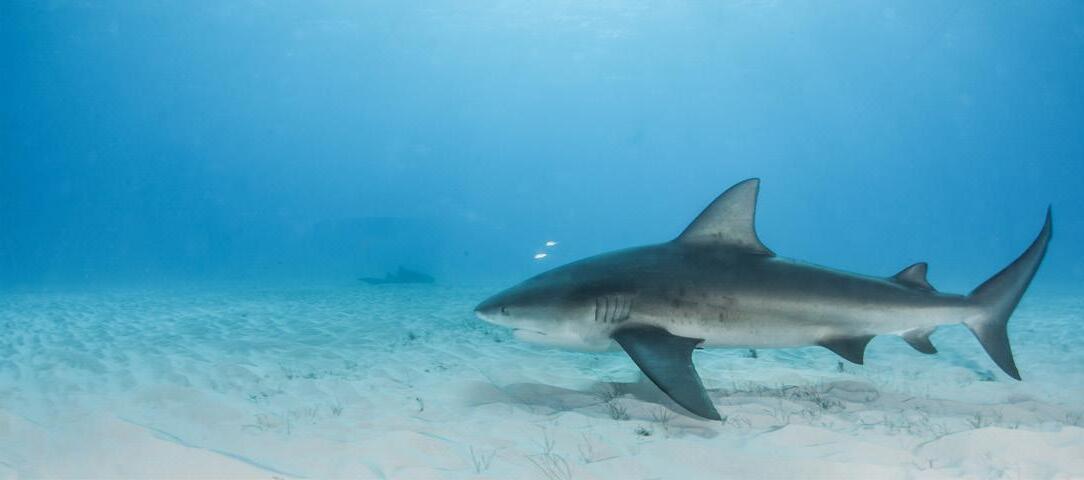
1 minute read
THREATENED SHARKS
FAU Researchers First to Measure Toxins in Indian River Lagoon Bull Sharks

Toxins produced from harmful algal blooms (HABs) are making their way through the food web and into young bull sharks in the Indian River Lagoon (IRL), according to a recent study led by researchers at the FAU Harbor Branch Oceanographic Institute.

Concentrations of phycotoxins were measured in shark gut contents, plasma (blood) and liver samples collected from 50 young bull sharks captured in the IRL between 2018 and 2020. HAB species produce phycotoxins, potent chemicals produced by organisms at the base of the food chain, as well as in marine algae and cyanobacteria. The contaminants degrade habitat quality and make wildlife and people sick.
Results, published in the journal Science of the Total Environment, suggest multiple phycotoxins in the IRL are widespread or persistent in the environment. Analysis of 123 samples demonstrated the presence of multiple phycotoxins (microcystin, nodularin, teleocidin, cylindrospermopsin, domoic acid, okadaic acid and brevetoxin) in sampled bull sharks. The highest concentrations of most toxins were detected in the gut content samples, highlighting dietary exposure as an important mechanism of toxin transfer to bull sharks in the system.
“The presence of one or more phycotoxin in 82 percent of the bull sharks sampled in our study and their prey items highlights the potential threat of toxic algae to the Indian River Lagoon ecosystem and surrounding human populations that may consume the same prey species,” said Michelle L. Edwards, corresponding author, former field technician and marine science and oceanography graduate student at FAU Harbor Branch.
According to Matt Ajemian, Ph.D., senior author, assistant research professor and director of the Fisheries Ecology and Conservation Lab at FAU Harbor Branch, researchers have just scratched the surface on what HAB exposure means for bull sharks in the IRL.
“This was an essential first step in developing critical baselines as we continue to monitor the responses of these animals to HABs in the future,” Ajemian said.











